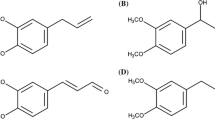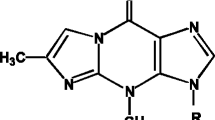Abstract
Nickel is a toxic and carcinogenic environmental and occupational pollutant and quercetin is a dietary flavonoid that is reported to modulate effects of many mutagens and carcinogens. We investigated the ability of nickel chloride to induce DNA damage in human colonic mucosa cells in the presence of quercetin, using the alkaline comet assay. Nickel chloride (5–250 μmol/L) evoked dose-dependent DNA damage and quercetin at 50 μmol/L decreased the extent of this damage. The cells exposed to nickel chloride progressively removed their DNA damage and the presence of 50 μmol/L quercetin in the repair-incubation medium did not affect the repair kinetics. Cells exposed to nickel and treated with endonuclease III, an enzyme recognizing oxidized bases, displayed a greater extent of DNA damage than those not treated with the enzyme. Quercetin did not exert a significant effect on the production of oxidized bases by nickel. Pretreatment of the cells with a nitrone spin trap, N-tert-butyl-α-phenylnitrone, decreased the extent of DNA damage evoked by nickel. Quercetin caused a further decrease in the extent of the damage in the presence of the trap. The results obtained suggest that reactive oxygen species, including free radicals, might be involved in the formation of DNA lesions induced by nickel chloride in colonic mucosa cells and that quercetin may exert protective effects in these cells.
Similar content being viewed by others
References
Aherne SA, O'Brien NM. Protection by the flavonoids myr-icetin, quercetin, and rutin against hydrogen peroxide-induced DNA damage in Caco-2 and Hep G2 cells. Nutr Cancer. 1999:34:160-6.
Ashby JA, Tinwell H, Lefevre PA, Browne MA. The single cell gel electrophoresis assay for induced DNA damage (comet assay): measurement of tail length and moment. Mutagen-esis. 1995:10:85-90.
Bailly V, Verly WG. Escherichia coli endonuclease III is not an endonuclease but a beta-elimination catalyst. Biochem J. 1987:242:565-72.
Blasiak J. DNA-damaging effect of cadmium and protective action of quercetin. Pol J Environ Stud. 2001:10:427-42.
Blasiak J, Kowalik J. A comparison of the in vitro genotoxicity oftri-and hexavalent chromium. Mutat Res. 2000:469:135-45.
Blasiak J, Trzeciak A, Gasiorowska A, Drzewoski J, Malecka-Panas E. Vitamin C and quercetin modulate DNA-dama-ging effect of N-nitro-N'-methyl-W-nitrosoguanidine (MNNG). Plant Foods Hum Nutr. 2002:57:53-61.
Ciccarelli BB, Wetterhahn KE. Molecular basis for the activity of nickel. IARC Sci Publ. 1984:53:201-13.
Collins AR, Duthie SJ, Dobson VL. Direct enzymatic detection of endogenous base damage in human lymphocyte DNA. Carcinogenesis. 1993:14:1733-5.
Cotelle N, Bernier JL, Catteau J, Pommery J, Wallet JC, Gaydou EM. Antioxidant properties of hydroxyflavones. Free Radic Biol Med. 1996:20:35-43.
Deschner EE, Ruperto J, Wong G, Newmark H. Quercetin and rutin as inhibitors of azoxymethanol-induced coionic neo-plasia. Carcinogenesis. 1991:12:1193-6.
Duthie SJ, Dobson VL. Dietary flavonoids protect human colonocyte DNA from oxidative attack in vitro. Eur J Nutr. 1999:38:28-34.
Duthie SJ, Collins AR, Duthie GG, Dobson VL. Quercetin and myricetin protect against hydrogen peroxide-induced DNA damage (strand breaks and oxidized pyrimidines) in human lymphocytes. Mutat Res. 1997a;393:223-31.
Duthie SJ, Johnson W, Dobson VL. The effect of dietary flavonoids on DNA damage (strand breaks and oxidized pyrimidines) and growth in human cells. Mutat Res. 1997b; 390:141-51.
Elliot RM, Astley SB, Southon S, Archer DB. Measurement of cellular repair activities for oxidative DNA damage. Free Radic Biol Med. 2000:28:1438-46.
Harrison L, Hatahet Z, Purmal AA, Wallace SS. Multiply damaged sites in DNA: interaction with Escherichia coli endonucleases III and VIII. Nucleic Acids Res. 1998:26: 932-41.
Hertog MGL, Hollman PCH, Katan MB, Kromhout D. Intake of potentially anticarcinogenic flavonoids and their determi-nants in adults in the Netherlands. Nutr Cancer. 1993:20: 21-9.
Klaude M, Eriksson S, Nygren J, Ahnstrom G. The comet assay: mechanisms and technical considerations. Mutat Res. 1996:363:89-96.
Krueger I, Mullenders LHF, Hartwig A. Nickel(II) increases the sensitivity of V79 Chinese hamster cells towards cispla-tin and transplatin by interference with distinct steps of DNA repair. Carcinogenesis. 1999:20:1177-84.
Kuwabara M, Inanami O, Endoh D, Sato F. Spin trapping of precursors of thymine damage in X-irradiated DNA. Bio-chemistry. 1987:26:2458-65.
Makita H, Tanaka T, Fujitsuka H, Tatematsu N, Satoh K, Hara A, Mori H. Chemoprevention of 4-nitroquinoline I-oxide-induced rat oral carcinogenesis by the dietary flavonoids chalcone, 2-hydroxychalchone, and quercetin. Cancer Res. 1996-59:4904-9.
Nakayama T, Yamada M, Osawa T, Kawakishi S. Suppression of active-oxygen-induced cytotoxicity by flavonoids. Bio-chem Pharmacol. 1993:45:265-7.
Osswald K, Becker TW, Grimm M, Jahreis G, Pool-Zobel BL. Inter-and intra-individual variation of faecal water-genotoxicity in human colon cells. Mutat Res, 2000;472:59-70.
Palumbo A, Astarita G, Picardo M, d'lschia M. Ni2+, a double-acting inhibitor of neuronal nitric oxide synthase interfering with L-arginine binding and Ca f calmodulin-dependent enzyme activation. Biochem Biophys Res Commun. 2001; 285:142-6.
Pool-Zobel BL, Leucht U. Induction of DNA damage by risk factors of colon cancer in human colon cells derived from biopsies. Mutat Res. 1997:375:105-15.
Ratty AK, Das NP. Effects of flavonoids on nonenzymatic lipid peroxidation: structure-activity relationship. Biochem Med Metab Biol. 1988:39:69-79.
Singh NP, McCoy T, Tice RR, Schneider EL. A simple technique for quantitation of low levels of DNA damage in individual cells. Exp Cell Res. 1988:175:184-92.
Stinson TJ, Jaw S, Jeffery EH, Plewa MJ. The relationship between nickel chloride-induced peroxidation and DNA strand breakage in rat liver. Toxicol Appi Pharmacol. 1992; 117:98-103.
Sunderman FW. Mechanisms of nickel carcinogenesis. Scand J Work Environ Health. 1989:15:1-12.
US Department of Health and Human Service. National Toxicology Program Technical Report on the Toxicology and Carcinogenesis Studies of Quercetin in F344/N Rats. NIH publication no 91-3140. Research Triangle Park, NC: US Department of Health and Human Service;1992.
Venturi M, Hambly RJ, Glinghammer B, Rafter JJ, Rowland IR. Genotoxic activity in human faecal water and the role of bile acids: a study using the alkaline comet assay. Carcino-genesis. 1997:18:2353-9.
Verma AK, Johnson JA, Gould MN, Tanner MA. Inhibition of 7,12-dimethylbenz[a]anthracene-and N-nitrosomethylurea-induced rat mammary cancer by dietary flavonoid querce-tin. Cancer Res. 1988:48:5754-8.
Wozniak K, Blasiak J. Free radical-mediated induction of oxidized DNA bases and DNA-protein cross-links by nickel chloride. Mutat Res. 2002;514:233-43.
Author information
Authors and Affiliations
Rights and permissions
About this article
Cite this article
Blasiak, J., Arabski, M., Pertyński, T. et al. DNA damage in human colonic mucosa cells evoked by nickel and protective action of quercetin – Involvement of free radicals?. Cell Biol Toxicol 18, 279–288 (2002). https://doi.org/10.1023/A:1016059112829
Issue Date:
DOI: https://doi.org/10.1023/A:1016059112829




